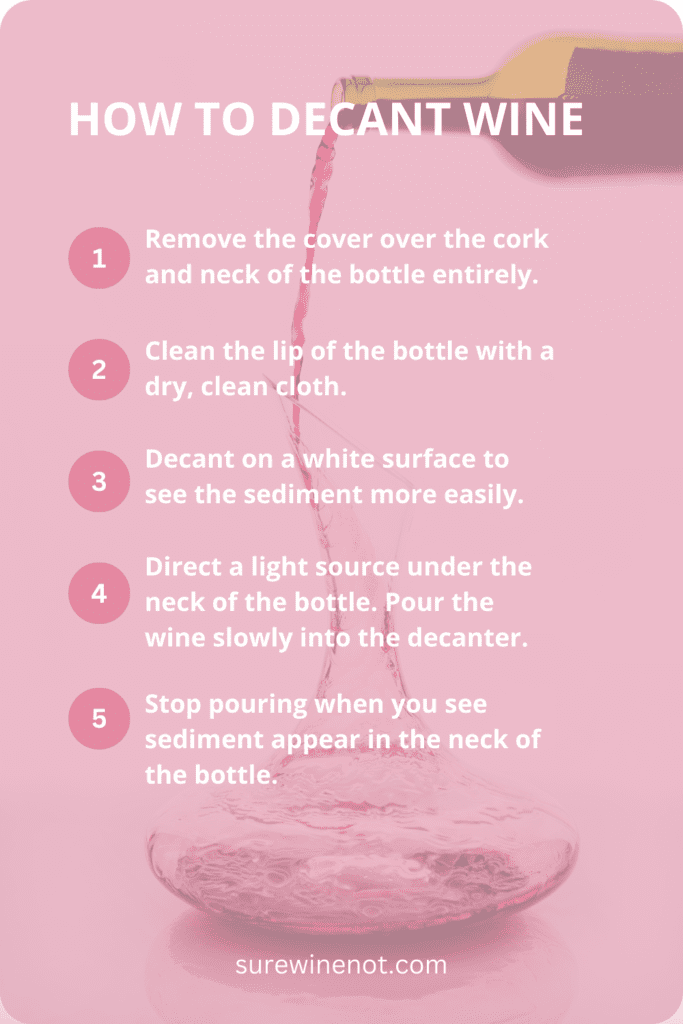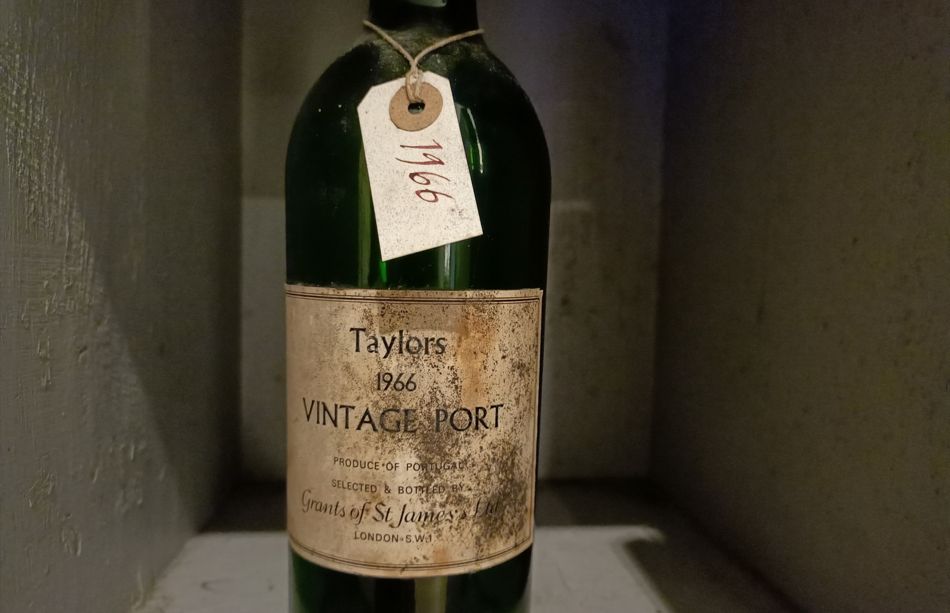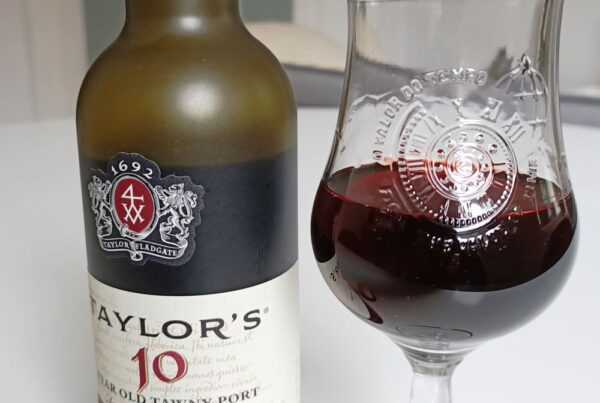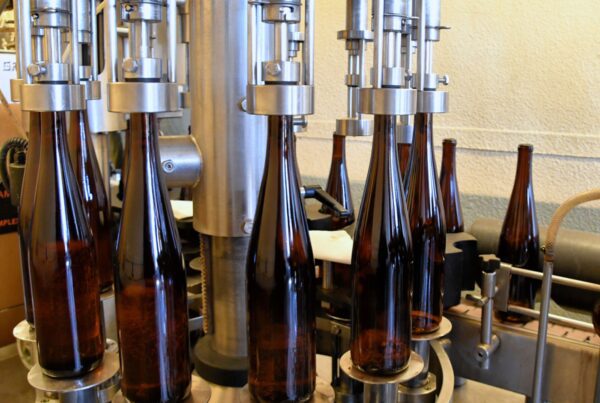Decanting is pouring wine from the bottle into another receptacle, usually a glass decanter.
But why should we do it and when should we decant?

Contents
- 1 Why wines are decanted
- 2 Wines that require decanting
- 3 How far in advance of serving wine to decant
- 4 How to decant wine
- 5 Carafe v decant – what’s the difference?
- 6 Do I need a fancy carafe or decanter?
- 7 Can I drink a glass of wine with sediment in it?
- 8 Should I let the wine breathe by opening the bottle?
Why wines are decanted
It is only necessary to decant wine that has a wine deposit in the bottle. It will look duller and taste less clean/pristine if the wine is not separated from the sediment.
Wine is also decanted to allow a wine to ‘open up’, that is soften the tannins and improve the bouquet through contact with air; however, there is not a lot of evidence relating to the advantages of exposing wine to air.
Finally, decanted wine simply looks more attractive in a glass decanter!

Wines that require decanting
The vast majority of wines do not need to be decanted. Fine red wines designed to mature for several years and vintage ports will typically have a deposit that warrants decanting.
The deposits form during the ageing process and can taste bitter, as well as not giving the wine a nice appearance. Some aged white wines can also require decanting.
To tell if there is sufficient deposit that requires decanting, hold a light (flashlight, light on a phone, desk lamp etc.) to the base of the bottle.
Wines that have been stored horizontally in a cellar need time to allow the sediment to drop to the bottom. Ideally, stand wine vertically the day before or the night before.

How far in advance of serving wine to decant
It is wise to smell wine before decanting to evaluate if it smells closed and requires opening up.
Younger wines require less decanting.
Expert opinions on decanting fully mature wines vary, but some experts believe that they should be decanted right before drinking because decanting can reduce aromas and some older wines are fragile.
So, decanting older wines as late as is convenient is acceptable.

How to decant wine
Remove the cover over the cork and neck of the wine entirely. This will make it easier to see the sediment when decanting.
For older bottles, clean the lip of the bottle if has sediment or dust with a dry, clean cloth before pouring.
Ideally, decant on a white surface to see the sediment more easily.
Direct the light source under the neck of the bottle. Pour the wine slowly into the decanter. Stop pouring when you see sediment appear in the neck of the bottle (and before it goes into the decanter).
You should see the sediment toward the end of pouring the bottle if the wine has been left to settle upright for the correct amount of time (overnight or longer).
Carafe v decant – what’s the difference?
To carafe a wine refers to the practice of pouring wine from bottle into another vessel.
It is often done for high quality young wines that are supposed to be aged and are not quite in their drinking window. It helps to open up the wine.
Unlike decanting, there is no sediment to separate. So, the flashlight etc. is not necessary for pouring into another vessel.
Do I need a fancy carafe or decanter?
No, you don’t need a fancy decanter. As long as the vessel you use is clean and does not give off bad odors, it should be fine. Glass is preferable.

11 ways to decant wine without a decanter
Wines can and will ‘open up’ in the glass, so it’s not the end of the world if you forget to decant your wine.
Can I drink a glass of wine with sediment in it?
The sediment is not harmful, but it can taste bitter. If some sediment gets into your glass of wine, allow the sediment to fall to the bottom of the glass, and then decant or pour it into another glass the same way you would decant from the bottle (use a flashlight to see the sediment clearly and pour until the deposit can be seen near the top of the glass. Stop pouring at this point).
Should I let the wine breathe by opening the bottle?
Opening a bottle of wine to let it breathe is not really necessary. The surface area is too small to change taste and smell of the wine.






